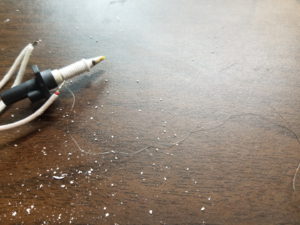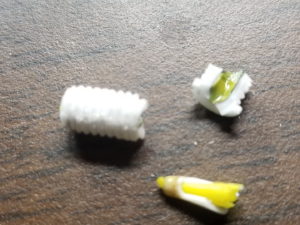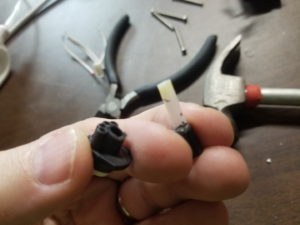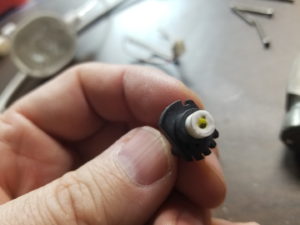The story I wanted to tell in the video was more focused on the people who may have backed this 3D printer, potential new comers to 3D printing, and how they might be accepted by the community that’s already here. In choosing this focus I had to put aside some of my more petty complaints about this printer and it’s campaign.
But that’s what the blog is for.
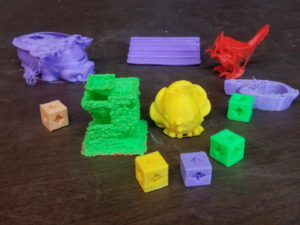 The thing about the GooFoo campaign is that there were no blatant, outright lies in the campaign. Yes, they mislead people, sometimes, I suspect, knowingly. But they never lied. Like when they said they would start shipping on December 15th, leading more than a few people to back this campaign thinking there was a chance it would arrive before Christmas. Only it didn’t show up until February, if they were lucky. Did GooFoo start shipping in December? They said they did, and I suspect what happened was they had a handful of hand chosen receivers, possibly who knew ahead of time that they were getting an early shipment. Whether that was a complete, functioning printer or just a box of parts, who knows?
The thing about the GooFoo campaign is that there were no blatant, outright lies in the campaign. Yes, they mislead people, sometimes, I suspect, knowingly. But they never lied. Like when they said they would start shipping on December 15th, leading more than a few people to back this campaign thinking there was a chance it would arrive before Christmas. Only it didn’t show up until February, if they were lucky. Did GooFoo start shipping in December? They said they did, and I suspect what happened was they had a handful of hand chosen receivers, possibly who knew ahead of time that they were getting an early shipment. Whether that was a complete, functioning printer or just a box of parts, who knows?
But whenever someone posted on their campaign that they were excited to receive this for their kid for Christmas, did GooFoo correct that assumption? Of course not! Why would they? The truth is rarely good for marketing.
And, while I mentioned it before, I’m gonna mention it again. In the campaign they surrounded their printer with prints that very clearly were not made on their printer. Now, GooFoo did do their best to show during the campaign that certain of those prints were possible on the Cube. But while they proved their 3d printer could, you know, 3d print, they still mislead people with the images they showed.
They said it would print in 30 minutes. I don’t know what they meant by that. I guess *something* would be able to print in 30 minutes, but most of the prints I did were longer than 30 minutes. I know they gave it a huge nozzle to try to speed it up, but even the printabloks were 34 minutes. But that was with that huge skirt for leveling, too, so… maybe that’s the 4 minutes. But it’s not fast. And it doesn’t heat up particularly fast, though it doesn’t have a bed to heat up, so I guess that helps. But, yeah, that 30 minute thing, what the heck was that promising?
But at the end of the day, that’s all marketing. You expect a little shenanigans from marketing. What matters is that the GooFoo cube isn’t (technically) a scam. The printer is real. It does (most of) what was promised, and GooFoo deliver. GooFoo delivered a slow, noisy, loose, floppy, and riddled with technical problems 3D printer. But they delivered.
So, about that nozzle. Now that the videos done, and since I may have a replacement coming, I decided to tear down the nozzle and see how it was constructed. As I mentioned, I noticed the heater element was just wrapped around the nozzle. But what surprised me was that it wasn’t an insulated wire, but that the feedpath/nozzle (which I now know is all one construction) has a screw groove in it, that a very thin heater wire is wrapped into that screw groove, and then it’s covered with some kind of insulating clay stuff. Like plaster of Paris or something. The ends of the wire are just wrapped around, top and bottom, and this heater wire is attached to them at the top and the bottom.
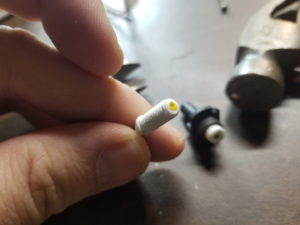 After doing a little aggressive exploration, I was able to determine that the nozzle and the feed path are all one, and that there is no metal in this thing at all. I have no idea what the material is, but it does seem to be the same stuff that 3D pens are made of.
After doing a little aggressive exploration, I was able to determine that the nozzle and the feed path are all one, and that there is no metal in this thing at all. I have no idea what the material is, but it does seem to be the same stuff that 3D pens are made of.
The material doesn’t act like plastic. It doesn’t give when cut. It goes straight to shattering. That makes me wonder if it isn’t some kind of ceramic.
A little more aggressive exploration, and I’ve found there’s a PTFE tube in there just before the heated path and assembly, and I really wonder why this is there? In traditional 3D printers the PTFE tube acts as insulation, going either right up to or actually inside the hot block to prevent too much of the heat energy from being absorbed by the material before you want it to be. But in this case, the heater element is well below that point, making me wonder if this length of tube is, strictly speaking, necessary.
I’m still not sure what part of this assembly was outgassing and giving me a headache when it was overheating. Again, I don’t know what this nozzle is made of, But if the heater element is capable of getting to temperatures that can damage whatever it is (and that’s not unusual for unchecked heater elements), it raises concerns.
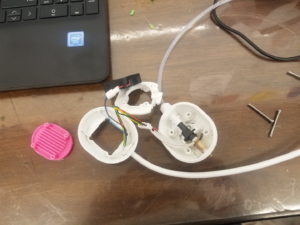 I’m glad I’m not putting this one back together after this. The wire management on this thing is a beast as you’re trying to cram everything back into it’s case. However, lego-like assembly also means modular assembly. It’s no problem to get a whole new extruder assembly and swap it out. But, hopefully this time they’ll have that thermistor where it’s supposed to be.
I’m glad I’m not putting this one back together after this. The wire management on this thing is a beast as you’re trying to cram everything back into it’s case. However, lego-like assembly also means modular assembly. It’s no problem to get a whole new extruder assembly and swap it out. But, hopefully this time they’ll have that thermistor where it’s supposed to be.
Once again, I failed to record this one in 4K. I thought I had fixed that setting. I was apparently wrong. So if the zoomed in portions look a little less sharp than they should, that’s no because I didn’t shave, that’s because when it comes to being my own camera man, I am a dum dum.


